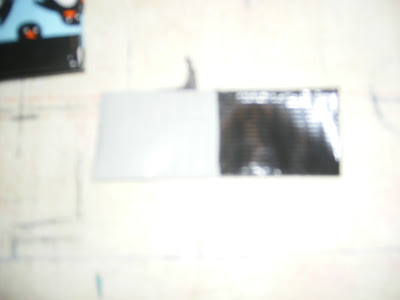Eric Carle Inspired Seahorses
This project is actually inspired by a "mishap" while my kindergarten class was in my room. One student who is more difficult to keep on task than most of the other students decided to go beyond the paper I gave him. He ended up scribbling all over the table with the crayons. Of course the student, his homeroom teacher, and I had a talk about vandalizing school property. We had him stay inside for the first few minutes of his recess time to clean the table to the best of his ability. He understood that what he did was wrong.
Of course I think learning to respect school property is a valuable lesson. We have to learn to clean up our messes. I can't have students scribbling all over the tables, or can I? I found myself thinking, "This student was obviously not engaged in the project I assigned." What can I do to engage learners who seem to enjoy moving around like my student who scribbled on the tables? What if not cleaning up our messes meant the creation of authentic art?
For the next class meeting, I covered all of the tables in white paper and put out various crayons. I read the book Mister Seahorse by Eric Carle (2004) to the students and paused after reading a few pages. I explained that each group is going to make on ocean scene on the paper in front of them and that they are going to create their ocean scene by scribbling all over the paper. The students were so excited! They had to ask a few times if they really were allowed to just scribble on the whole paper. It seems like they have never been allowed to create like this. As students quietly began to scribble, I finished reading the story. Next, we used watercolors over the crayons to create a resist. Some of the watercolor marks ended up looking like splashing water.
During the next class meeting, students began with a small seahorse to color while we reviewed the artwork featured in Mister Seahorse (Carle, 2004). Then students began working on their large seahorse. While I had them use a template to create their seahorse, I let them decide on details such as how many spikes their seahorse would have and how big the mouth should be. Students colored their seahorses and decorated them with colorful squares and decorative buttons for the eyes. Lastly, while they were finishing up their seahorses, they came up, one group at a time, to the painting station I set up to paint their names. I allowed them to write their name however they would like. (Some letters came out backwards, but who knows, maybe thats how they will write their name when they are an artist!) Below are pictures of 2 out of the 6 murals that the kindergarteners created.
 |
| I love the free form scribbles and shapes! |
 |
| The elevators at my school feel like you are in the ocean! |
The students really seemed to enjoy working on a large scale. I thought it allowed them to be free in their art making. I noticed less students complaining that they "messed up" and none of them asked to start over as they often do. As I was saying before, maybe our messes are a work of art in itself. Students should be allowed to discover this through guidelines that can be stretched instead of being limited to a tiny space with very specific directions.
Carle, E. (2004). Mister Seahorse. New York, NY: Philomel Books.











































